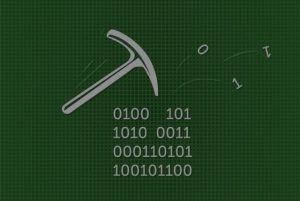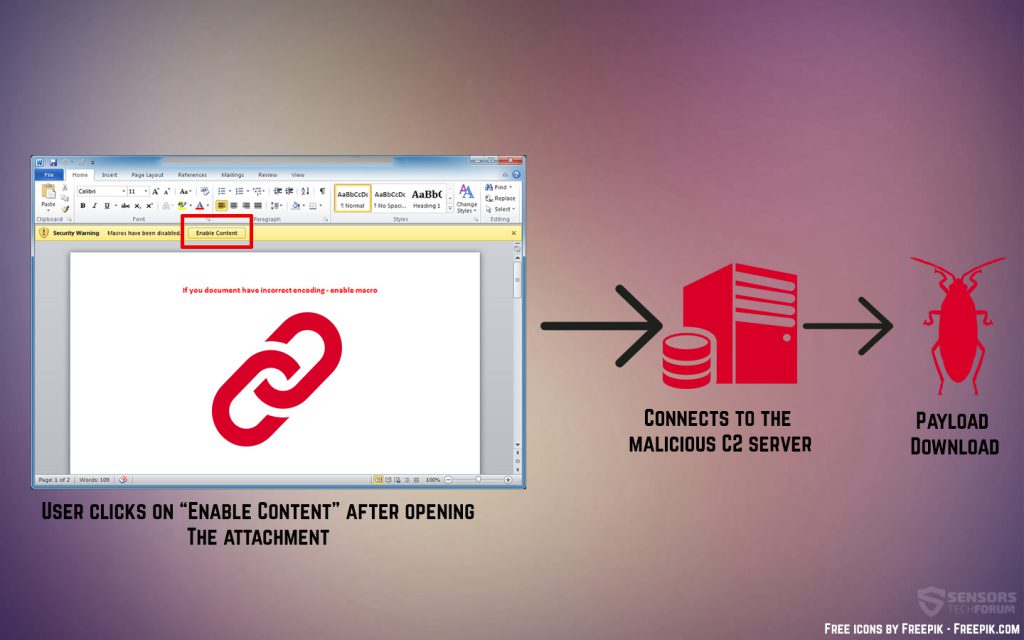 This article has been created in order to help you by explaining what is the OSX.Coinminer and how to remove it computer completely.
This article has been created in order to help you by explaining what is the OSX.Coinminer and how to remove it computer completely.
A new cryptocurrency miner for Apple computers has been discovered by Symantec researchers. The miner malware aims to overuse the CPU and GPU resources on your MacBook and generate cryptocurrency money to the cyber-criminals who are behind this malware. The OSX.Coinminer threat may also perform other unwanted activities on your MacBook, such as obtain different information from it, like logins, passwords, files, etc. If you suspect that your computer has fallen victim to the OSX.Coinminer, we advise you to read the following article in order to learn how to remove this malware from your computer and protect it against future crypto miner infections, like OSX.Coinminer.

Threat Summary
| Name | OSX.Coinminer |
| Type | Cryptocurrency Miner Malware for Mac |
| Short Description | Aims to use the resources on the Apple devices running OSX in order to mine for cryptocurrencies, like BitCoin or Monero. |
| Symptoms | The infected computer may experience performance slow-downs, system freezes and may even crash at times. |
| Distribution Method | Spam Emails, Email Attachments, Executable files |
| Detection Tool |
See If Your System Has Been Affected by malware
Download
Malware Removal Tool
|
User Experience | Join Our Forum to Discuss OSX.Coinminer. |
| Data Recovery Tool | Windows Data Recovery by Stellar Phoenix Notice! This product scans your drive sectors to recover lost files and it may not recover 100% of the encrypted files, but only few of them, depending on the situation and whether or not you have reformatted your drive. |

OSX.Coinminer – How Does It Infect
The primary method of infection, which may be used by OSX.Coinminer is likely done via e-mail spam messages, that may carry malicious e-mail attachments or malicious web links within them. Since OSX has the so-called Sandbox protection of Apps, the infection file may actually be a legitimate document which triggers malicious macros only after the user has allowed it to run. Such documents may be Microsoft Word documents which trigger the infection when the user clicks on “Enable Content” in order to see what is in the document. After doing so, the following chain of activities may be activated:
In addition to this, the OSX.Coinminer may also trigger an infection via websites that have been infected and contain it’s malicious JavaScript code which when you visit the website, triggers a drive-by download and the infection process is initiated.
Also, another scenario which has been reported to be associated with OSX.Coinminer has been reported to be conducted via bundling the application with legitimate setups for software or games.

OSX.Coinminer – More Information and Activity
When the OSX.Coinminer has infected your OSX machine, the malware may begin to execute the malicious cryptocurrency mining code alongside the legitimate app. This way, OSX.Coinminer makes you to believe that you have the legitimate application running, while in the background it runs hashing operation which is basically calculating complex mathematical tasks to generate cryptocurrency money. This activity may result in your computer having to slow down, freeze at times and have you wondering why does this happen. The main danger besides the decrease in performance is that if the miner runs for longer periods of time on your device, it may damage it’s components due to overutilization.
In addition to this, since OSX.Coinminer is malicious, the malware may perform various unwanted activities that have nothing to do with the mining operation it does on your OSX device. Such activities may include:
- Steal system information, such as IP address, ISP, System Language and Location.
- Steal important information, like you name, address, financial data and passwords for accounts.
After this has been done, the malware may also run automatically the coin miner procedure each time you start your Mac. The way the mining operation is by connecting your computer to third-party mining pools, which contain a lot of different infected computers linked to the wallet of the cyber-criminal so the more computers he infects, the more money they make.

Remove OSX.Coinminer from Your Computer
In order to detect and remove this cryptocurrency miner Trojan from your computer system, we recommend that you focus on downloading an advanced anti-malware software from it. The OSX.Coinminer is the type of malware which aims to remain unnoticed so experts would strongly suggest to use an advanced malware detection and removal tool for OSX machines in order to make sure that this program is fully gone from your computer and it stays protected against future infections as well.
Preparation before removing OSX.Coinminer.
Before starting the actual removal process, we recommend that you do the following preparation steps.
- Make sure you have these instructions always open and in front of your eyes.
- Do a backup of all of your files, even if they could be damaged. You should back up your data with a cloud backup solution and insure your files against any type of loss, even from the most severe threats.
- Be patient as this could take a while.
- Scan for Malware
- Fix Registries
- Remove Virus Files
Step 1: Scan for OSX.Coinminer with SpyHunter Anti-Malware Tool



Step 2: Clean any registries, created by OSX.Coinminer on your computer.
The usually targeted registries of Windows machines are the following:
- HKEY_LOCAL_MACHINE\Software\Microsoft\Windows\CurrentVersion\Run
- HKEY_CURRENT_USER\Software\Microsoft\Windows\CurrentVersion\Run
- HKEY_LOCAL_MACHINE\Software\Microsoft\Windows\CurrentVersion\RunOnce
- HKEY_CURRENT_USER\Software\Microsoft\Windows\CurrentVersion\RunOnce
You can access them by opening the Windows registry editor and deleting any values, created by OSX.Coinminer there. This can happen by following the steps underneath:


 Tip: To find a virus-created value, you can right-click on it and click "Modify" to see which file it is set to run. If this is the virus file location, remove the value.
Tip: To find a virus-created value, you can right-click on it and click "Modify" to see which file it is set to run. If this is the virus file location, remove the value.Step 3: Find virus files created by OSX.Coinminer on your PC.
1.For Windows 8, 8.1 and 10.
For Newer Windows Operating Systems
1: On your keyboard press + R and write explorer.exe in the Run text box and then click on the Ok button.

2: Click on your PC from the quick access bar. This is usually an icon with a monitor and its name is either “My Computer”, “My PC” or “This PC” or whatever you have named it.

3: Navigate to the search box in the top-right of your PC's screen and type “fileextension:” and after which type the file extension. If you are looking for malicious executables, an example may be "fileextension:exe". After doing that, leave a space and type the file name you believe the malware has created. Here is how it may appear if your file has been found:

N.B. We recommend to wait for the green loading bar in the navigation box to fill up in case the PC is looking for the file and hasn't found it yet.
2.For Windows XP, Vista, and 7.
For Older Windows Operating Systems
In older Windows OS's the conventional approach should be the effective one:
1: Click on the Start Menu icon (usually on your bottom-left) and then choose the Search preference.

2: After the search window appears, choose More Advanced Options from the search assistant box. Another way is by clicking on All Files and Folders.

3: After that type the name of the file you are looking for and click on the Search button. This might take some time after which results will appear. If you have found the malicious file, you may copy or open its location by right-clicking on it.
Now you should be able to discover any file on Windows as long as it is on your hard drive and is not concealed via special software.
OSX.Coinminer FAQ
What Does OSX.Coinminer Trojan Do?
The OSX.Coinminer Trojan is a malicious computer program designed to disrupt, damage, or gain unauthorized access to a computer system.
It can be used to steal sensitive data, gain control over a system, or launch other malicious activities.
Can Trojans Steal Passwords?
Yes, Trojans, like OSX.Coinminer, can steal passwords. These malicious programs are designed to gain access to a user's computer, spy on victims and steal sensitive information such as banking details and passwords.
Can OSX.Coinminer Trojan Hide Itself?
Yes, it can. A Trojan can use various techniques to mask itself, including rootkits, encryption, and obfuscation, to hide from security scanners and evade detection.
Can a Trojan be Removed by Factory Reset?
Yes, a Trojan can be removed by factory resetting your device. This is because it will restore the device to its original state, eliminating any malicious software that may have been installed. Bear in mind, that there are more sophisticated Trojans, that leave backdoors and reinfect even after factory reset.
Can OSX.Coinminer Trojan Infect WiFi?
Yes, it is possible for a Trojan to infect WiFi networks. When a user connects to the infected network, the Trojan can spread to other connected devices and can access sensitive information on the network.
Can Trojans Be Deleted?
Yes, Trojans can be deleted. This is typically done by running a powerful anti-virus or anti-malware program that is designed to detect and remove malicious files. In some cases, manual deletion of the Trojan may also be necessary.
Can Trojans Steal Files?
Yes, Trojans can steal files if they are installed on a computer. This is done by allowing the malware author or user to gain access to the computer and then steal the files stored on it.
Which Anti-Malware Can Remove Trojans?
Anti-malware programs such as SpyHunter are capable of scanning for and removing Trojans from your computer. It is important to keep your anti-malware up to date and regularly scan your system for any malicious software.
Can Trojans Infect USB?
Yes, Trojans can infect USB devices. USB Trojans typically spread through malicious files downloaded from the internet or shared via email, allowing the hacker to gain access to a user's confidential data.
About the OSX.Coinminer Research
The content we publish on SensorsTechForum.com, this OSX.Coinminer how-to removal guide included, is the outcome of extensive research, hard work and our team’s devotion to help you remove the specific trojan problem.
How did we conduct the research on OSX.Coinminer?
Please note that our research is based on an independent investigation. We are in contact with independent security researchers, thanks to which we receive daily updates on the latest malware definitions, including the various types of trojans (backdoor, downloader, infostealer, ransom, etc.)
Furthermore, the research behind the OSX.Coinminer threat is backed with VirusTotal.
To better understand the threat posed by trojans, please refer to the following articles which provide knowledgeable details.














